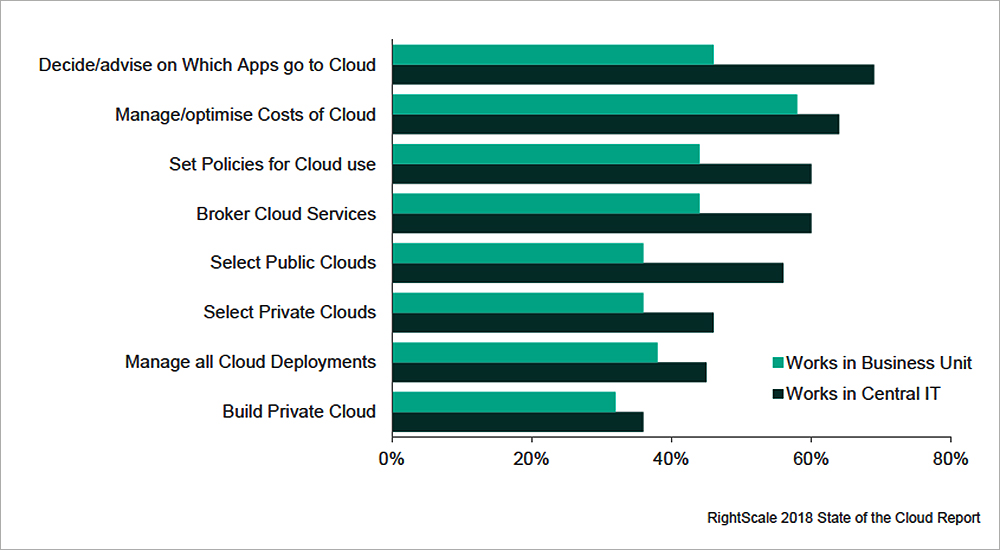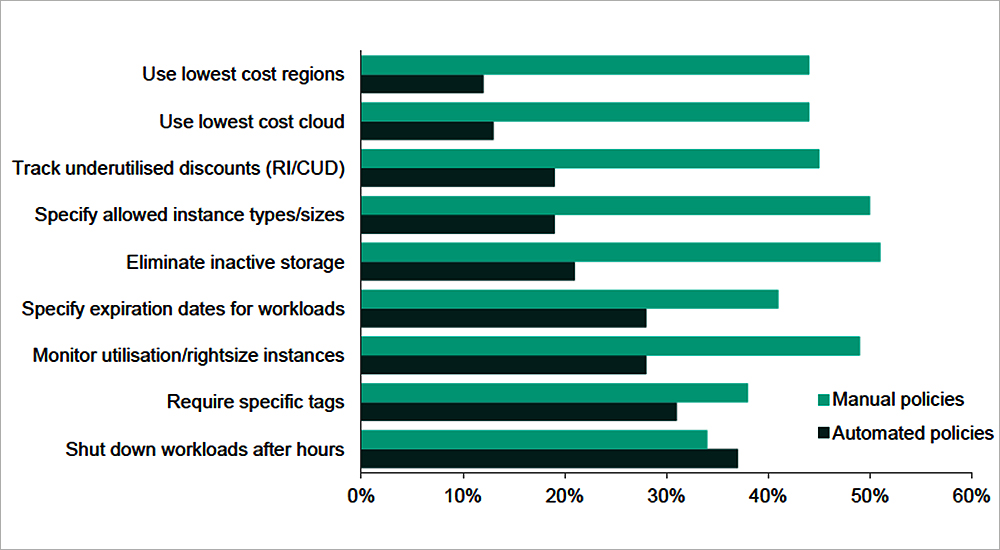Multi-cloud enabling tomorrow’s digital transformation

The ability to keep pace with technological change and consumer demand will push many European, Middle Eastern, and African businesses to breaking point in the next five years. While the era of cloud apprehension is almost over, the multi-cloud is a huge opportunity to innovate and stay ahead of the curve. It also presents a new dimension of strategic challenge. Cloud storage was an enormous and cost-effective step forward for both enterprises and consumers. That was just the tip of the iceberg. The challenges and possibilities have irrevocably changed.
Using multiple public clouds is now a powerful conduit for flexibility, innovation and regulatory compliance. The multi-cloud is a game-changer bringing cloud architects, DevOps, NetOps and SecOps together for transformational services traditional infrastructures simply cannot deliver. Technologies such as artificial intelligence and machine learning will be fundamental to driving higher levels of automation. Although challenges exist today related to cost, skills, legal constraints and legacy infrastructure configurations, the outlook over the next five years is bright.
Multi-cloud is defined as managing resources across two different clouds or more, regardless of location, that is multiples of public and or private cloud. Amazon Web Services and Microsoft Azure lead the way in terms of popularity as well as market share, followed by Google Cloud Platform, Oracle, IBM and HP.
Businesses not using multi-cloud will be in the minority in the next five years. According to RightScale’s 2018 State of the Cloud Report, 81% of surveyed global enterprises currently have a multi-cloud strategy in place. There will be some businesses that stick with one vendor, but the majority are definitely going to go on a multi-cloud journey.
In today’s business environment, it is impossible to stick to one platform, one provider, and one type of cloud. Some industries are already leading the multi-cloud field. The biggest multi-cloud consumers right now are finance by a huge margin, retail and healthcare. That is a huge hunk of the economy.
In Cloudify IOD’s 2017 State of Enterprise MultiCloud Report, the most popular two-cloud combination was AWS and Azure, followed by AWS and OpenStack, and AWS and Google Cloud. Cloudify believes the preference for AWS and Azure stems from a desire to avoid vendor lock-in.
Now, more than ever, the multi-cloud environment is the de facto pattern. With the uptake in cloud consumption, organisations are fearful of being locked in to a single global provider. CIOs have realised that some clouds are more appropriate for certain workloads than others. It is not about going for a supplier anymore but more about picking the right place for the right reason.
While a multi-cloud strategy can facilitate significant developments in security, flexibility and control it also presents significant challenges. Experts claim that one of multi-cloud’s biggest impacts is likely to be cultural, particularly within IT departments. The multi-cloud ramp up is one of the ultimate wake-up calls in internal IT to get their act together. One of the biggest transformative changes that it brings to an enterprise is the realisation of what a high performing IT organisation is and how it compares to what they have. Most are finding their IT organisations are sadly underperforming.
There are now outsourced options where a datacentre can be put in place within minutes. You do not really need an IT organisation that needs a month to prepare servers for a business project. Interestingly, the process of selecting which public cloud to use has the most divergent views. Central IT believes the selection of public clouds is more integral to their role than the business units envision.
Vendor lock-in
Vendor lock-in is a major concern for enterprises that value flexibility, and a major conundrum when weighing up the pros and cons of multi-cloud. Some companies will commit to one platform if it means they can access innovative new services more easily. 47% of industry influencers surveyed by Logic Monitor see vendor lock-in as one the biggest challenges for organisations dealing with the public cloud. Meanwhile, 20% of enterprises in the 2017 Cloudify IOD State of Enterprise Multi-Cloud report stated that interoperability and no lock-in was the most important feature.
Specialisation and the provision of specific vertical innovations may not be in the spotlight as often as the big hypervisors, but they are important factors in a multi-cloud world. You are going to see more regional clouds provided by telcos to deliver specialist services to specific areas. Sometimes a local cloud is much more important than having something that is generic.
According to the 2017 Cloudify IOD State of Enterprise Multi-Cloud report, Software Defined Networking and Network Function Virtualisation are the most critical emerging technologies for the telecommunications, defence and space industries. Containers are much more important for the software, networking and IT services industries. The cloud service providers that can integrate all these new technologies for specific industry verticals are becoming increasingly valuable.
You should have at least two hyperscale providers and maybe one speciality provider. This way you can have competition at the hyperscale level combined with the specialist services of the smaller provider. The smaller provider’s prices could also influence the others. Having multiple cloud service providers means also enterprises can quickly migrate workloads based on their needs at any given time.
Experts agree that specialist clouds running in concert with the large cloud service providers are likely to accelerate multi-cloud adoption in the next five years. Businesses are becoming more technologically savvy and specific with their requirements. This is forcing the bigger service providers to adapt while also opening up significant opportunities for those that can fill in the gaps and innovate.
Innovation in the future
Dashboards that can be used to monitor multiple cloud services while also providing granular information will be the most common addition to IT professionals’ tool-kits over the next five years. Experts agree that dashboards and the abstraction of a single layer are big short term necessities. Simple management dashboards are already available, but the incorporation of new technology will be vital. Looking ahead, abstraction that can reach throughout the whole stack, integrating cloud services, containers and serverless functions will become standard. It is moving you towards configuration, including smaller amounts of code, more manageable cost profiles.
As workload types change, so too does the need to orchestrate or manage them. Logic Monitor’s Cloudvision 2020 report shows that 27% of IT professionals surveyed believe that 95% of workloads will be run in the cloud in five years. Inevitably, workloads will change in the future, influenced by factors such as the need to process data generated from IoT and other nascent technologies.
The abstraction of the various layers and constant adaptation to new services does, however, impact on flexibility and cost. While enterprises want to be flexible, it can be difficult when tools that manage different cloud services and containers are hard to find. In addition, maintaining multiple cloud service providers can also be costly, depending on the size of a workload. Cloud service providers are adapting to customer demands, proactively creating new services and modules, as well as enabling start-ups and small and medium businesses to implement new strategies or develop new ways of launching products.
Embracing multi-cloud could also increase vulnerability. New services that are not properly implemented could soon result in exploits, hacks, bugs and a host of other unforeseen problems. Over the coming decade, AI orchestration will lead to the gradual takeover of tasks and functions. AI and new orchestration capabilities will allow enterprises to automate many processes that would otherwise take up valuable time, freeing up IT teams for other tasks. New serverless architectures will fuel enterprises to cut down on time-to-market and simplify processes. It could also enable provider agnosticism and make it easier to benefit from the multi-cloud.
Flexibility
Vendor lock-in can prevent enterprises from being as flexible as they would like. This includes concerns of missing out on new features from other cloud service providers or the lack of a failsafe. The whole process of digitalisation demands that you have the ability to seamlessly move between different forms of cloud, whether it is on-premises or off-premises or in the private or public cloud.
Comparison tools can give companies the ability to plan their multi-cloud strategy before committing to a provider mix. A diversity of consumption models can also enable focused trials and experimentation before committing to a service provider. While dashboards are becoming more readily available, the ability to seamlessly switch between cloud services is already practised in some enterprises. In this instance, using a layer of abstraction could preserve flexibility while cutting down both financial and time costs.
IDC reports that over 42% of European organisations cite managing and controlling cost as their most pressing multi-cloud data management priority. This rises to 51% among larger enterprises. According to RightScale’s 2018 State of the Cloud Report, 64% of enterprise central IT respondents said that they viewed managing and optimising the costs of the cloud as central to their role.
Inefficiency is also an issue. On average, respondents estimated that 30% of their cloud spend was wasted. RightScale also measured an additional 5% of waste. Costs can soon mount: 43% of respondents claimed to spend over $50,000 a month on their public cloud provision. Consolidation of spending and understanding the existing technology landscape is of paramount importance for enterprises. RightScale reports that 58% of respondents believe cloud saving optimisation is the number one priority in 2018.
Multi-cloud dashboard
Getting the right provider mix in place calls for rigorous analysis and clarity of purpose. Brand loyalty should not curtail action. If a service provider is fit for purpose, it should be considered. The availability of choice will allow people to cherry-pick where they will get the best bang for their buck for a specific service. Experts call for more enterprise support to get it right. This could come in the form of a dashboard or management platform that flags instances of waste. Ultimately, upfront costs are less important if enterprises alight on their optimal cloud configuration and remain customer-centric.
With a multi-cloud dashboard, it becomes possible to mix, match and combine the best options. Once you have more of that dashboard approach, and once you have greater commoditisation and the prices come down further, you will see an explosion in start-ups leveraging multi-cloud’s benefits.
21% of respondents in the RightScale 2018 State of the Cloud Report stated that managing cloud spend was a significant challenge, with 55% saying that it was somewhat of a challenge. This changes slightly by company size, with 80% of enterprises claiming that managing cloud spend was a challenge, compared to only 72% of SMBs. Billing complexities can drive enterprises away from multi-cloud. Tools such as dashboards can help give DevOps and other IT professionals the visibility needed to maintain control.
Flexibility and cost are two of the main motivations for enterprises using cloud services today. A strong multi-cloud strategy can only emerge if constructed with a coherent aim and full visibility of any potentially derailing variables. Experts expect to see the emergence of price comparison and switching services for cloud. Initially, these will require user input, but automation could soon take over for greater speed and accuracy. Both cloud service providers and enterprises would be able to devote much more time to other more strategic tasks. Automation-focused tools also have powerful waste-saving properties.

Multi-cloud outlook

#1
Innovation and specialisation will allow enterprises to find the best tools for their specific needs. Upfront cost will diminish as a deployment impediment over time. Enterprises will be able to grow in an optimal direction and become able to independently innovate and deliver new services. Technologies set to drive this transition include serverless architectures, and AI-powered orchestration layers and configuration tools to aid data-driven decision-making. Fear of vendor lock-in is expected to continue as a key justification for multi-cloud investments.
#2
With a multi-cloud strategy, enterprises can assign workloads to public clouds that are best suited for specific tasks, including speed, agility and security. Typically, cost is a barrier for many enterprises looking to use multiple cloud providers, though that short-term mindset is starting to change as more use-cases come to light. One of the ways that enterprises are increasing multi-cloud flexibility is through the adoption of open source, using resources such as Kubernetes or OpenStack. However, some experts strike a cautionary note and believe open source’s popularity is on the wane.
#3
Using the right combination of cloud services will not only ensure flexibility but also provide redundancies in the case of errors or server failure. The latter can be the difference between services working or critical failure. As ever, cost is a potential roadblock. However, tools are emerging to ensure waste is cut and long-term gains of innovation-fueling multi-cloud strategy are becoming apparent.
Key takeaways
- We have got to find a way to collapse technology monitoring landscape to a single, simple view.
- You have to have some sort of a management, security, governance infrastructure to deal with the number of cloud-native services under your control.
- The layer required to sit above cloud services would need to cover multiple types of monitoring, including compliance, security, management, billing.
- The number of aspects a dashboard needs to cover is impossible via a single pane of glass.
- Need at least three or maybe four windows into operational world.
- Need API management tools to see what APIs are doing.
- Need container management tools to look at what containers are doing.
- Need cloud management tools to manage cloud services layer
- Need monitoring infrastructure for the rest.
Multi-layer dashboard
A dashboard is on the mind of every single IT director or CIO that you talk to. While dashboards can significantly decrease the complexity of managing multi-cloud services, some argue that it could add another dimension of complexity. Future automation could mitigate this viewpoint, however. There needs to be an IT operations desk that gives you the operational view.
It is a kind of two-layered single pane. The end-user view and then the operations view of what is really happening behind the scenes while consumers are using all these different cloud services, building apps, deploying them in to containers and so on. There needs to be that single view to basically aggregate all those APIs into.
Generally, a dashboard is necessary to implement control over various different processes, including utilisation management and potentially even historic utilisation analysis. More specifically, a dashboard is vital in the context of controlling security operations across multiple clouds.
Managing security across multiple clouds can be difficult, especially with different protocols that are not interoperable with one another. As a result, a multi-dashboard solution may be required. The single pane of glass for the cloud is only one of multiple panes of glass that we need to manage this environment.”
The need for multiple dashboards to drill down into specific operations such as security also raises questions about the elimination of potential vulnerabilities, including on-premises storage and cloud services. Automation is key, governance is key, third party security systems and identity access management is key. This is going to drive a lot of spending over the next five years.
While a dashboard would be a welcome addition to the monitoring arsenal of a business, some experts believe it could distract DevOps from the underlying technology and just create another new set of problems to grapple with. Dashboards can only really abstract you away so much from the underlying platform. Ultimately, you still need to understand everything that lies behind that. While a dashboard can provide information and oversight it could also add another layer of unwanted complexity. Furthermore, the desire to drill down into operations to look at native services may prevent some IT professionals from adopting more generalist dashboards.
Skills challenge
Adopting a multi-cloud strategy is necessary for many businesses for flexibility reasons but the added complexity of monitoring multiple cloud services, as well as containers, APIs and other processes can be daunting. Standardisation of processes across multiple cloud services can thus be a major inhibitor to multi-cloud. There is also a knowledge and skills gap to contend with. Available workforces are simply not keeping pace with technological developments and business requirements. Siloing of existing knowledge or lack of collaboration within businesses may further exacerbate multi-cloud apprehension and unfamiliarity.
Many IT professionals lack both general and specific knowledge as it relates to multi-cloud. For instance, they may not know about how to efficiently use new services like serverless architectures, or how to integrate or orchestrate multiple processes to work in tandem. A move to a multi-cloud strategy brings significant challenges and enterprises need to ensure they understand the nuances of these before they invest too heavily.
Multi-cloud management was cited as the fourth biggest challenge for enterprises according to the 2017 Cloudify IOD State of Enterprise MultiCloud report. This is seen as almost as important as more traditional cloud management concerns such as app deployment or automated scaling and was deemed even more important than cost analysis. Not sharing information across teams can also deny businesses access to new and potentially game- changing technologies.
Cloudify and IOD’s 2017 State of Enterprise MultiCloud report found that the speed of technological adoption was far greater in non-siloed organisations. 74% of non-siloed organisations took six months or less to adopt new technology, versus 58% of siloed organisations taking over six months to adopt new tech.
It is vital for all the relevant parts of a business to understand any cloud strategy in use. Any knowledge gaps can result in severe security or compliance issues. It can also lead to problems with Shadow IT whereby certain individuals begin using another cloud provider without the knowledge of the rest of the organisation. Experts claimed that there was little difference in the skills required to use multiple clouds. Someone trained on Azure or AWS is going to be able to make the transition fairly easily and understand the language and the environment.
According to the Cloudify IOD 2017 State of Enterprise MultiCloud report, the three biggest hindrances to the adoption of new technology are people and politics 32%, skillsets 22%, and company culture 21%. These make up 75% of the hindrances to new technology adoption and highlights the necessity to properly disseminate of information within a company. Building skillsets is arguably the trickiest to overcome. Training or hiring can be an enormous effort for enterprises, and even deciding on which skills are necessary can be difficult.
Learning multiple platforms is a pain. Trying to make the shift from on-premises to the cloud is hard enough, and learning multiple cloud platforms is an added, unnecessary layer of complexity. The cumulative result of all this uncertainty is that some enterprises will not move to the multi-cloud in the near future. The multi-cloud approach can scale relative to the size of the enterprise, but the ability to keep track of the myriad services and upgrades pushed out by major cloud service providers can be overwhelming.
If you know Amazon has 500-1000 services that you are interested in and Google has 200 services and Azure has 500 services, and if you are adding all three of those clouds, then you have to manage the use of those services amongst the systems in your portfolio. The ability to do abstraction, governance, and federated security that goes beyond the major cloud providers is key, and obviously that adds much more risk, much more expense, and much more complexity.
Enabling IT to broker multiple cloud services is an important initiative for 32% of respondents in RightScale’s 2018 State of the Cloud report. This shows that there may be miscommunication between IT operators who see the necessity of developing a multi-cloud strategy, and those that are restricting it. Once again this can impact innovation and agility. Clearly, it is necessary to have standardised knowledge and goals throughout an organisation.
Management skills deficiency creates lag
According to findings from 451 Research, there are regional differences to consider as well. Almost four out of five surveyed businesses in Western Europe claimed IT and security departments are best placed to understand digital transformation. In the Middle East and Africa, it was just over three in five.
451 Research found that legal teams lag behind in the understanding of digital transformation, which in the context of GDPR and other regulations could prove problematic. In Western Europe, just over half of legal departments claimed full understanding, dropping to below two in five for the Middle East and Africa. The nature of moving to multi-cloud can have far-reaching implications. Making sure all teams adequately understand the details is vital to prevent inconsistencies and difficult situations. The good news is that workforces tend to be receptive to new technology and skillsets.
Recent data from WinMagic’s June 2018 survey of global IT decision makers backs this up. 63% of respondents claimed that the need for multiple management tools halted their multi-cloud strategies. A quarter of the respondents claimed that, because of compliance issues, they only work with a single cloud vendor. The difficulty of staying on top of cloud services increases steeply with the number of services an enterprise monitors. If you have got lots of small services then monitoring becomes key.
The future
As more enterprises adopt a multi-cloud strategy, complexity will increase dramatically, at least for a period of time. This will be somewhat alleviated when dashboards and other tools become common, and orchestration and machine learning take over time consuming aspects of managing and standardising multiple clouds.

Key takeaways
- Whoever controls the multi-cloud, controls the future.
- Gone are the days of using a single cloud provider and the age of multi-cloud is unavoidable.
- One of the most disruptive developments that will evolve over the next five years is serverless paradigm.
- Serverless growth has been documented by RightScale’s 2018 State of the Cloud report, showing 75% increase in just one year.
- Ability to move fluidly between different cloud service providers as needs dictate is becoming essential.
- Multi-cloud management complexity means businesses need new tools and processes to cope.
- Multi-cloud is a game-changer bringing cloud architects, DevOps, NetOps and SecOps together for transformational services traditional infrastructures simply cannot deliver.
- Multi-cloud is defined as managing resources across two different clouds or more, regardless of location.
- According to RightScale’s 2018 State of the Cloud Report, 81% of surveyed global enterprises currently have a multi-cloud strategy in place.
- Vendor lock-in is a major concern for enterprises that value flexibility.
- You should have at least two hyperscale providers and maybe one speciality provider.
- As workload types change, so too does the need to orchestrate or manage them.
- According to Logic Monitor’s Cloudvision 2020 report, 27% of IT professionals believe that 95% of workloads will be run in the cloud in five years.
- Maintaining multiple cloud service providers can be costly depending on the size of a workload.
- IDC reports over 42% of European organisations cite managing and controlling cost as their most pressing multi-cloud priority.
- According to RightScale’s 2018 State of the Cloud Report, 64% of respondents said they viewed managing costs of cloud central to their role.
- Standardisation of processes across multiple cloud services can be an inhibitor to multi-cloud.
- Siloing of existing knowledge or lack of collaboration within businesses may exacerbate multi-cloud apprehension and unfamiliarity.
- According to the Cloudify IOD 2017 State of Enterprise MultiCloud report, three biggest hindrances to new technology are people 32%, skillsets 22%, and culture 21%.
- 63% respondents claimed the need for multiple management tools halted their multi-cloud strategies.
- Quarter of respondents claimed because of compliance issues they only work with a single cloud vendor.
- Difficulty of staying on top of cloud services increases steeply with number of services an enterprise monitors.
- If you have got lots of small services then monitoring becomes key
Excerpted from The Future of Multi-Cloud Report by F5 and Foresight Factory.





